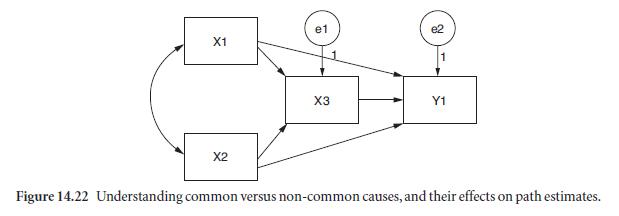7. Exercise 6 in Chapter 4 was designed to explore further the nature of common causes, and...
Question:
7. Exercise 6 in Chapter 4 was “designed to explore further the nature of common causes, and what happens when non-common causes are included in a multiple regression.

We will begin our analysis of these data here, and will return to them in Part 2 when we have the tools to explore them more completely.” This example was also used in Chapter 9 to illustrate the effects of common versus non-common causes.
You now have the tools to explore these data and this topic more completely. To review, there were three data files for this exercise, all including variables labeled X1 X2 X3 and Y1. For the data in the first file (common cause 1.sav), X2 influenced both X3 and Y1 (it was a common cause). In the second file (common cause 2.sav) variable X2 had no effect on Y1. In the third file (common cause 3.sav), variable X2 had no effect on variable X3.
Analyze these data using an SEM program. For all three data sets, the model you should estimate is illustrated in Figure 14.22. Compute and examine the correlations among the variables in all the data sets. All correlations are statistically significant, correct?
Now analyze the model shown for all three data sets. Notice that for data set 2 the effect of X2 on Y1 is essentially zero. For data set 3, what is the effect of X2 on X3? Is X2 a common cause of X3 and Y1 in either model? Now notice the effect of X3 on Y1 in each model. What should happen to this path when the variable X2 is removed from the model?
Analyze each data set without variable X2 in the model. What happens to the magnitude of the path from X3 to Y1?
Consider what your findings mean concerning the nature of controlling for common versus non-common causes.
Step by Step Answer:







